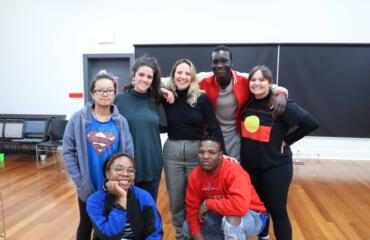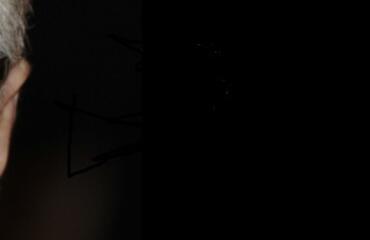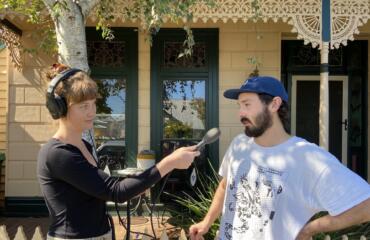When 10-year-old Matilda Spadoni logs on to her e-book app, she joyously trills “burrrrrrito!”
It’s not that she’s hungry. Matilda is describing her avatar; a highly sought-after cartoon burrito she unlocked by reading on e-book platform Epic.
It’s part of the gamification of reading. As children complete reading challenges or add books to their ‘favourites’ list, the app rewards them with badges and new ways to tweak their profile page.
“The higher level you are, the more pictures and borders you get”, explains Adele, Matilda’s twin sister.
Epic is to books, what Netflix is to shows and Spotify is to music. Parents pay a monthly subscription for ‘unlimited’ access to thousands of books that can be read on mobile devices like phones, tablets or laptops.
Digital streaming has overtaken markets for television and music. Technology companies are banking on books being next.
Epic, Scribd, OverDrive’s Libby and Amazon’s Kindle Unlimited are among the main all-you-can-read book streaming services according to technology news Wired.
Yet with platforms like Epic aimed at children aged 12 and under, and e-book streaming gaining popularity, experts are watching closely to see what this will mean for children’s literacy and learning. Will paper books retain their favour and market share, or ultimately crumple?
Epic indeed
Uptake of Epic’s digital library ballooned during the global pandemic, from 10 million users in 2019 to some 50 million in 2020, the company reported. However, Epic did not respond to requests for information about the app’s use in Australia or global uptake in 2021.
When bookshops, schools and libraries closed during COVID-19 lockdowns, Epic capitalised on the opportunity. The company offered families limited free access to its digital library of 40,000 books, audio books and videos. Access was free during school hours, with families needing to pay for a monthly subscription for ‘unlimited’ access.
The offer was popular.
In Victoria, the app became the third most-used platform in remote learning, after Webex and YouTube, a survey of teachers by the Victorian branch of the Australian Education Union found.
The Spadonis attend a government primary school in Melbourne’s north. During remote learning, their teacher would often ask them to read a book on Epic, then write an opinion, recap or compare it to another title.
The twins also read for fun. Along with searching up books on their favourite animals – big cats for Adele, sharks for Matilda – the girls enjoyed the app’s game-like elements; unlocking special badges, choosing new virtual backgrounds, and designing their profile pictures.
Adele said they might even read 20 books in one day to unlock a new badge, enticed by the feeling of “oooh, I want to get that one!”

Adele Spadoni reading a book about tigers on e-book platform Epic
Photo: Supplied by Diana Spadoni
While Epic has a growing presence in Australia, in the United States it’s ubiquitous, used in 90 per cent of primary schools according to technology news site TechCrunch.
Epic co-founder Kevin Donahue told yahoo!finance the app was freely available to schools and teachers as a way to “boil the ocean of brand awareness” among its target audience – families and children.
Founded by tech entrepreneurs Suren Markosian and Kevin Donahue back in 2013, Epic’s success is such that last year global education technology behemoth Byju’s bought the e-book platform for $US500 million.
Print or digital – does medium matter?
An overwhelming majority – 90 per cent – of Australian parents said it’s important for children to read books, according to a YouGov survey.
But does the medium matter?
Experts say the debate has moved on from binary comparisons between print or digital. Now there’s a more nuanced understanding of the relative merits of paper and digital, which also depends on the child, genre and reading purpose.
In her book How We Read Now, Naomi S. Baron, a linguistics professor at American University in Washington, DC explored how different reading formats affect the way children concentrate and learn.
Professor Baron found that for younger children, print is more likely to encourage a shared social experience, like reading together with a parent or teacher. Digital is more likely to be done independently
“You’ve got a better shot at wanting to be a reader, statistically, if you have been read to with print as a child, and then together, read with an adult or older sibling,” Professor Baron said.
For school-age children, she found, print tends to be better for concentration and deeper understanding, whereas on a screen, children tended to read quickly and shallowly.
Natalia Kucirkova is a professor of reading and early childhood development based at the University of Stavanger in Norway. She co-authored a research paper analysing studies of younger children’s learning outcomes with paper and digital books.
“If you have everything equal, so the only thing that is different is whether it’s on a PC, tablet or paper, then the paper does outperform the digital format,” she said.

Does the medium – print or digital – matter if children are reading books? Photo: Petra Stock
This was the case when print books were compared to digital books where the text and illustrations had been simply converted for viewing on a screen, with minimal other additions or features.
However, when e-books included interactive elements designed to enrich the story, these had the potential to outperform paper and improve learning.
Professor Kucirkova said digital books offered the potential for unique, multi-sensory experiences using 3D and virtual reality. Her latest research is investigating scented e-books where smell is added to engage children’s senses in the reading experience.
Part of Epic’s pitch to parents is that the app provides ‘guilt-free screen time’, tapping into support for reading ahead of other online activities like playing computer games or watching shows.
Despite the evidence supporting a role for high quality digital books, Professor Kucirkova said parent surveys showed they often felt conflicted about e-books, with reservations about issues like screen time.
“They don’t want their child to miss out on the experience, but they worry about quality. They worry about how much time children spend on the screen. They have this nostalgia within them, they wish the child chose the printed book,” she said.
Excessive screen time ranks as parents’ number one child health concern when polled by Melbourne’s Royal Children’s Hospital in 2021.
When presented with a list of 27 child health issues, more than 90 per cent of Australian parents thought too much screen time was a problem, the poll found.
The Royal Children’s Hospital described excessive screen time as “a pervasive and significant ongoing concern in Australia”, noting that the screen time was also the top child health concern when the poll was last conducted in 2015.
Matilda and Adele have each read around 200 e-books on Epic. Yet, while the girls enjoy reading on the app, both agreed they prefer to read in print because they worry about the effects of too much screen time.
“On Epic you do it on a computer or an iPad so your eyes have a lot of time on the screen. If you have a paper book then your eyes aren’t on a screen, so it’s better for your eyesight,” Adele said.
Demand for paper books strong

Rolls of paper about to be turned into books at McPherson’s printing
Photo: Petra Stock
If the e-book takeover is coming, it hasn’t affected orders for the paper variety at Australia’s largest book printer, McPherson’s.
In the lead up to Christmas 2021, the company’s four large sheds in Maryborough, Victoria were humming as giant sheets of cream-coloured paper skimmed over aluminium rollers at a rate of 10,000 impressions an hour. Presses rolled and sliced pages, to be clamped, bound and glued between foiled, embossed and luminously coloured book covers.
The printer has been working to keep up with record demand, fulfilling orders for 20 million books, up from 17 million in an average year, according to McPherson’s sales manager, Craig Jennings.
Despite restrictions and lockdowns, sales of print books went up during the pandemic, Mr Jennings said.
The printer’s bumper year seems to be part of a wider trend.

The many different coloured inks used to print book covers at McPherson’s printing
Photo: Petra Stock
Around 66 million print books were sold in Australia in 2021 and 2020 according to Nielsen BookScan, up more than 8 per cent on pre-pandemic volumes. Similar print sales growth has been reported in the United States.
Books for children and young adults make up just under half of all books sold by volume in Australia, Nielsen BookScan data shows, with sales valued at $370 million in 2021.
While similar data isn’t available for e-books, demand is thought to account for around 15-20 per cent of the market, according to the Australian Council for the Arts.
The ‘theatre of the book’
Given the sales data, it’s no surprise that publishers put most of their design effort into the paper version.
Hannah Janzen is an award-winning designer passionate about working on children’s books.
Book design is “the invisible ink that ties together the words and the artwork”, Ms Janzen said.
Her work can encompass everything from cover art to customised lettering, fonts, colour palette, layout and print choices.
Ms Janzen said she loves the current trend for hand-drawn lettering and custom fonts, popular across junior fiction.
In The Nerd Herd, a series about a gang of farm animals, her cover design features lettering like a fence hammered together from timber slats.

In The Nerd Herd, a series about a gang of farm animals, Hannah Janzen’s cover design features lettering like a fence hammered together from timber slats. Photo: Petra Stock
While in the early days of e-readers, some publishers invested in specialised e-book design with custom animations, Ms Janzen said today that’s rare.
For the bulk of digital books, she said, the main design consideration is making sure the cover art is clear when viewed at “the size of a postage stamp”. That’s the size a book’s cover will be when viewed on a book store webpage, recommended on an e-book site, or shared as a ‘cover reveal’ by an author on social media.
Children’s book historian Leonard Marcus said physical elements like book size, font or paper are one of the reasons reading in print is a special experience.
“It’s part of the theatre of the book, the experience of the book. The book should, in its physical aspect, express something about what’s going on in the story,” he said.
Mr Marcus illustrated his point by referring to how Beatrix Potter’s pocket-sized books reflect the small creatures contained within, while Jean de Brunhoff’s books about Babar the elephant are oversized.
“You can’t do that on a screen because everything is the same size,” he said.
He expects the appetite for print will remain strong despite the rise of new e-book apps, recalling how a decade ago, the arrival of e-readers like the Kindle and the iPad prompted many to predict the demise of print books.
“In 2010, The New York Times had an article on the very front page of the newspaper, saying that picture books were finished because children were reading things on screens,” said Mr Marcus.

Children’s book historian Leonard Marcus said size is part of the theatre of the book
Photo: Petra Stock
A likely reason for the persistence of print is that many simply prefer reading on paper.
Paperbacks are by far the most popular format, followed by hardbacks, according to the 2021 National Reading Survey, which found 42 per cent of those surveyed hadn’t read an e-book in the past 18 months.
Children too, prefer the page over the screen. A majority – 79 per cent – said they will always want to read print books even though there are e-books available, according to Scholastic’s Kids and Family Reading Report.
Mr Marcus expects print books to remain in favour for some time, particularly as publishers lean in to the tangible qualities of the physical book, adding elements like gatefolds, shiny surfaces and special paper.
“I think there’s a kind of exhaustion with digital media, and that publishers have reacted by making the physical picture books more special in terms of their production and design. And people have embraced that.”




